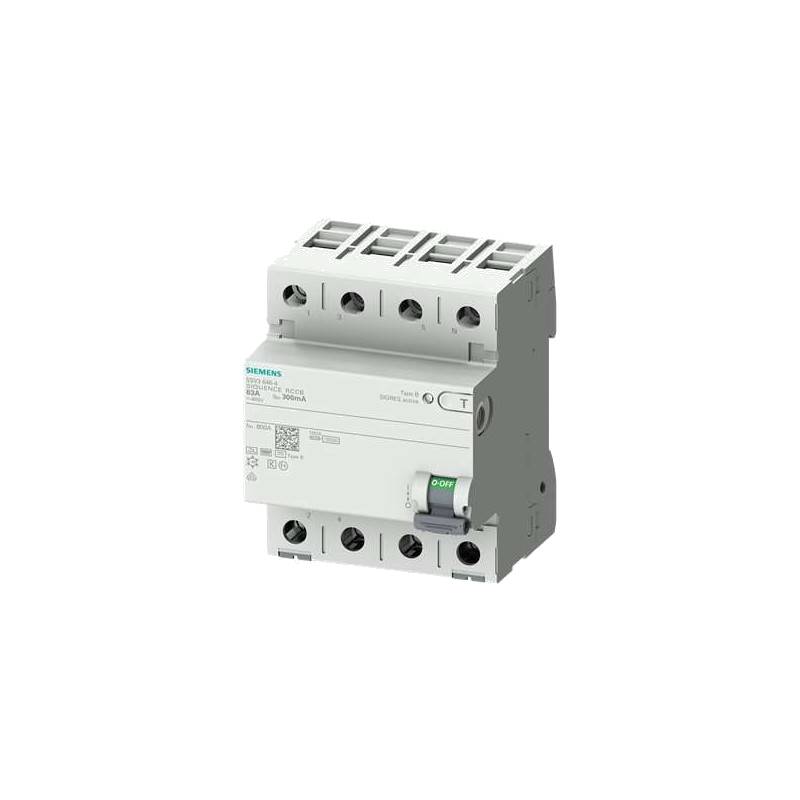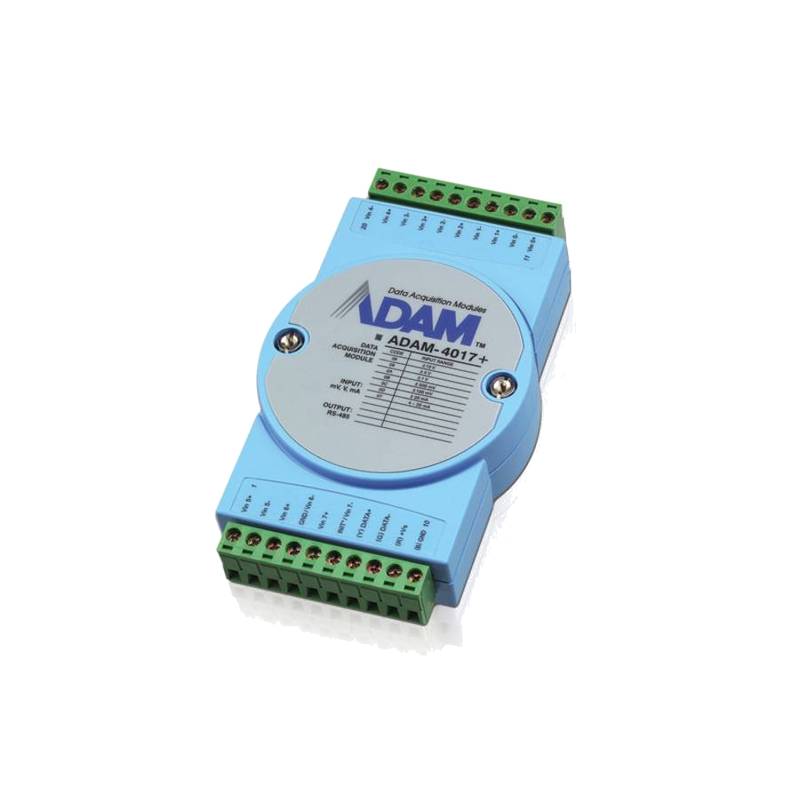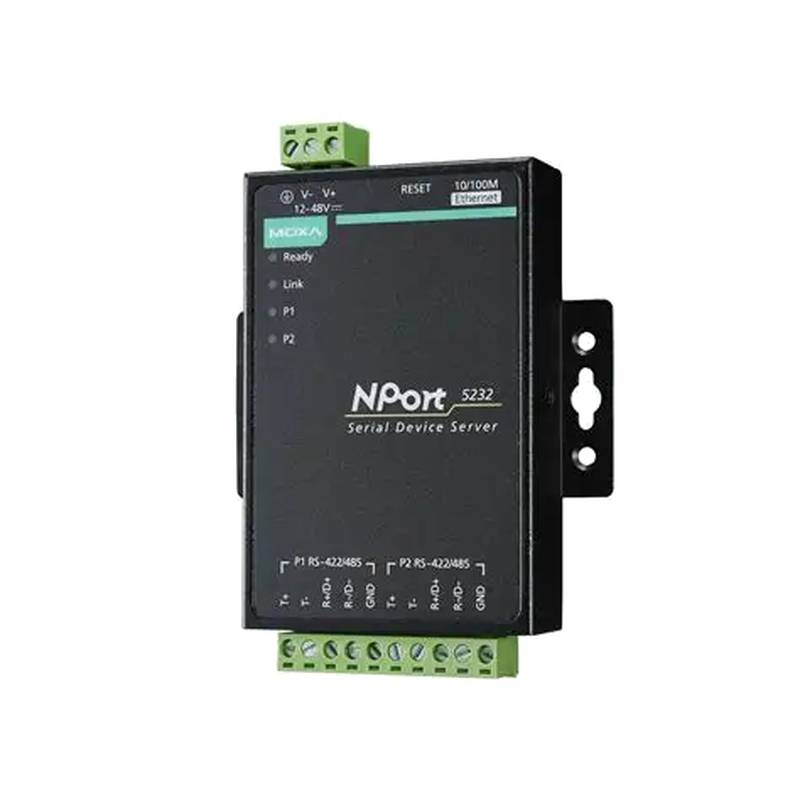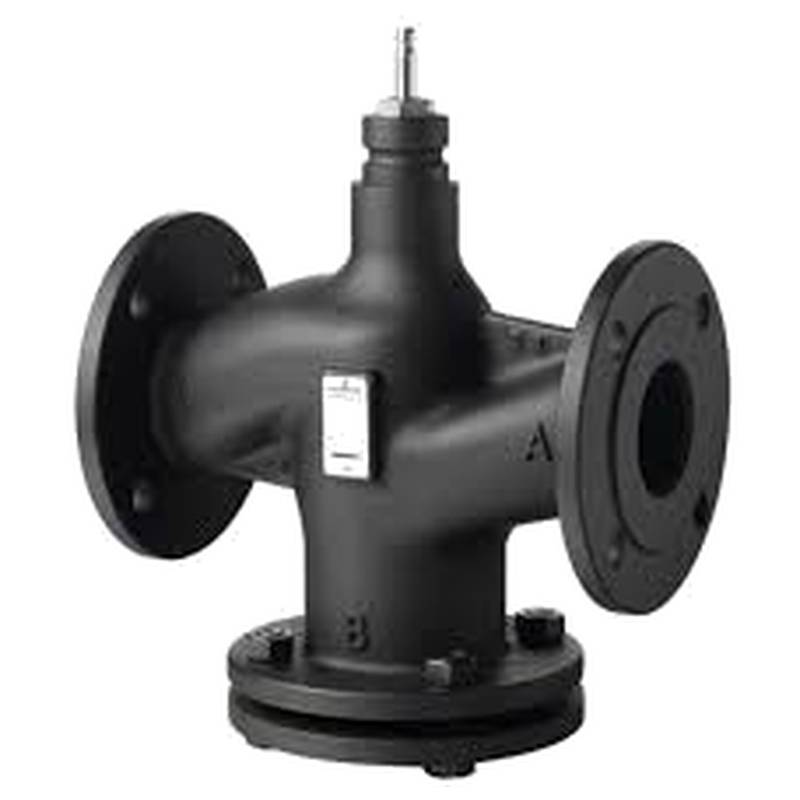
The Siemens 5SY6225-7CC is a robust three-phase industrial protection circuit breaker designed for reliable electrical system management. Its key advantages lie in its superior breaking capacity, enhanced safety features, and precise current tripping characteristics, making it an indispensable component for industrial power distribution. This 2-pole, 25A breaker offers exceptional performance and durability in demanding environments.
Siemens 5SY6225-7CC: Product Specifications
| Feature | Specification |
| :-------------------- | :-------------------------------------------- |
| Product Type | Miniature Circuit Breaker (MCB) |
| Manufacturer | Siemens |
| Series | 5SY6 |
| Poles | 2 |
| Rated Current (In) | 25 A |
| Rated Voltage (Un) | 400 V AC (per pole), 400 V AC (line-to-line) |
| Frequency | 50/60 Hz |
| Tripping Characteristic | C |
| Breaking Capacity (Icn) | 10 kA (at 400V AC) |
| Insulation Voltage (Ui)| 500 V |
| Impulse Withstand Voltage (Uimp)| 4 kV |
| Operating Temperature | -25 °C to +45 °C |
| Protection Class | IP20 (terminal area), IP40 (enclosure) |
| Mounting Type | DIN rail (35 mm) |
| Compliance | IEC/EN 60898-1, IEC/EN 60947-2 |
Core Features & Market Positioning
The Siemens 5SY6225-7CC distinguishes itself through its high breaking capacity of 10 kA, ensuring effective protection against short circuits in industrial settings. Its "C" type tripping characteristic provides optimal protection for inductive loads, offering a balance between preventing nuisance tripping and ensuring prompt disconnection under fault conditions. Siemens' reputation for quality and reliability in industrial automation further solidifies the 5SY6 series' market position as a trusted solution for critical power distribution. The precision engineering behind this circuit breaker ensures consistent performance and longevity, minimizing downtime and maintenance costs for industrial operations.
Key Application Scenarios
This 2-pole, 25A circuit breaker is ideally suited for protecting circuits in motor control centers, industrial machinery, and power distribution panels within manufacturing plants, processing facilities, and commercial buildings. Its robust design and high breaking capacity make it an excellent choice for safeguarding circuits with moderate to high inrush currents, such as those found in motor applications and lighting systems. The 5SY6225-7CC is frequently specified for applications requiring compliance with stringent industrial safety standards and where reliable fault interruption is paramount.
Practical System Integration Guidance
Integrating the Siemens 5SY6225-7CC into an existing electrical system is straightforward due to its standard DIN rail mounting and familiar terminal configurations. Ensure that the upstream power supply voltage and frequency align with the breaker's specifications (400V AC, 50/60 Hz). Proper wiring involves connecting the incoming live conductors to the designated input terminals and the outgoing protected circuit conductors to the output terminals. It is crucial to observe correct torque settings for the terminal screws to ensure secure connections and prevent overheating. Always verify that the breaker's rated current (25A) and breaking capacity (10kA) are appropriate for the circuit it is protecting, considering the load characteristics and potential fault levels.
Operation and Risk Mitigation
The primary function of the Siemens 5SY6225-7CC is to protect electrical circuits from overcurrents and short circuits by automatically interrupting the power flow when a fault condition is detected. Operation is indicated by the position of the toggle lever: up for ON, down for OFF. Tripping due to a fault is indicated by the lever being in a middle position. To reset the breaker after a fault, the lever must first be pushed fully to the OFF position before it can be switched back ON. Risk mitigation is achieved through proper installation, adherence to load ratings, and regular visual inspection of connections. Avoid operating the breaker under heavy load if it has tripped, and always address the underlying cause of the fault before re-energizing the circuit to prevent further damage or safety hazards.
Scalability & Long-Term Value
The Siemens 5SY6 series, including the 5SY6225-7CC, is designed for compatibility with a wide range of Siemens industrial control and automation components, facilitating system expansion and integration. Its standard form factor allows for easy replacement or addition to existing panel boards. While the 5SY6 series represents a mature and reliable technology, its integration into modern IIoT (Industrial Internet of Things) ecosystems can be achieved through compatible smart metering and communication modules, enabling remote monitoring and advanced analytics. This foresight in design ensures long-term value by supporting the evolution of smart industrial facilities and predictive maintenance strategies.
---
Frequently Asked Questions
What is the breaking capacity of the Siemens 5SY6225-7CC?
The Siemens 5SY6225-7CC has a breaking capacity of 10 kA at 400V AC. This high rating ensures it can safely interrupt fault currents. It is crucial for protecting downstream equipment from severe damage.
This specification is vital for industrial applications where fault currents can be substantial. It ensures the breaker performs reliably under extreme conditions. Always verify this against your system's fault current calculations.
The 10 kA rating meets the requirements for many standard industrial distribution systems. It provides a robust safety margin. It signifies a high level of protection against short circuits.
What does the "C" in 5SY6225-7CC signify regarding tripping characteristics?
The "C" designation indicates a C-type tripping curve. This curve is designed for circuits with moderate inrush currents, such as those with motors or fluorescent lighting. It allows for higher temporary overcurrents before tripping.
This characteristic provides a good balance between protecting against short circuits and preventing nuisance tripping. It's ideal for inductive loads that experience brief, high current surges upon startup. This minimizes operational interruptions.
Compared to B or D curves, the C-type offers a broader application range for industrial loads. It ensures reliable operation for equipment that draws more current when starting up. It’s a common choice for general industrial use.
Can the Siemens 5SY6225-7CC be used in single-phase applications?
While the 5SY6225-7CC is a 2-pole breaker, it's primarily intended for three-phase systems or applications requiring disconnection of both live conductors. It can technically protect a single-phase circuit if both poles are used to switch the live conductor, ensuring complete isolation. However, it is most effectively utilized in its intended multi-phase configurations.
Using both poles ensures that the entire circuit is safely de-energized when the breaker trips or is manually switched off. This provides a higher level of safety, especially in industrial environments where accidental energization can be dangerous. It's often used for circuits that must be fully isolated for maintenance.
For standard single-phase residential or light commercial applications, a 1-pole or 2-pole single-phase breaker might be more appropriate and cost-effective. The 5SY6225-7CC's robust design and higher breaking capacity are typically overkill for simpler single-phase loads.
What is the maximum voltage rating for this circuit breaker?
The rated voltage (Un) for the Siemens 5SY6225-7CC is 400 V AC. This applies to both the voltage per pole and the line-to-line voltage in a three-phase system. It is designed for standard industrial power grids operating at this voltage level.
The insulation voltage (Ui) is rated at 500 V, indicating the maximum voltage the insulation can withstand. This provides an additional safety margin beyond the operational voltage. It ensures the breaker's internal components are protected against dielectric breakdown.
Always ensure that the system voltage does not exceed 400 V AC when using this breaker. Exceeding this limit can lead to breaker failure, damage, or safety hazards. It is designed to comply with common European and international industrial voltage standards.
How should the Siemens 5SY6225-7CC be mounted in an electrical panel?
The Siemens 5SY6225-7CC is designed for standard 35 mm DIN rail mounting. This is the universal standard for modular electrical components in industrial and commercial panels. Proper mounting ensures secure physical attachment and correct electrical connection.
Ensure the DIN rail is securely fastened within the enclosure and is level. Slide the breaker onto the rail, engaging the clips at the top or bottom as per the breaker's design. Verify it is firmly seated and cannot be easily dislodged.
Always follow the manufacturer's torque specifications when tightening the terminal screws to ensure a secure electrical connection. Loose connections can lead to overheating and potential fire hazards. Proper installation is critical for safety and performance.
What is the operating temperature range for the 5SY6225-7CC?
The Siemens 5SY6225-7CC operates reliably within an ambient temperature range of -25°C to +45°C. This broad range makes it suitable for diverse industrial environments, from cold storage to moderately heated areas. It ensures consistent performance regardless of external conditions.
Operating outside this specified temperature range can affect the breaker's performance and lifespan. Extreme cold can make components brittle, while excessive heat can lead to premature aging of insulation and tripping inaccuracies. Ensure adequate ventilation in enclosures.
It's important to consider the cumulative heat generated by multiple breakers installed in close proximity within an enclosure. This ambient temperature consideration is crucial for accurate tripping performance and overall system reliability. Consult Siemens documentation for de-rating factors if necessary.
Is this circuit breaker suitable for DC applications?
The Siemens 5SY6225-7CC is designed and rated for AC applications only (400V AC, 50/60 Hz). It is not suitable for direct current (DC) circuits. Using it in DC applications can lead to improper operation, failure to trip, and significant safety hazards.
DC circuits have different arc-quenching requirements compared to AC circuits. Standard AC breakers often lack the necessary features to safely extinguish a DC arc. This can result in continuous arcing, damage to the breaker, and a fire risk.
For DC applications, you must select circuit breakers specifically designed and rated for DC voltage and current. Always consult the manufacturer's specifications to ensure the breaker is appropriate for the intended application. Using the wrong type of breaker is a critical safety violation.
What does the "P" in "2P" stand for in the product name?
The "2P" in the Siemens 5SY6225-7CC product name signifies that it is a two-pole circuit breaker. This means it has two independent switching poles, designed to interrupt both conductors of a circuit simultaneously. It is commonly used in three-phase systems or for switching both live and neutral conductors in single-phase systems.
Using a two-pole breaker ensures that both conductors of a circuit are disconnected when a fault occurs or when the breaker is manually switched off. This provides complete isolation of the circuit from the power source, enhancing safety during maintenance or in fault conditions. It's a key feature for industrial power distribution.
In a three-phase system, a 2P breaker is typically used for single-phase loads within that system or for critical loads where complete isolation of both conductors is mandated. For fully protecting a three-phase motor, a three-pole (3P) breaker would be required.
How can I reset the Siemens 5SY6225-7CC after it has tripped?
To reset the Siemens 5SY6225-7CC after it has tripped due to an overcurrent or short circuit, you must first push the toggle lever fully to the "OFF" position. This action ensures that the tripping mechanism is fully disengaged. It's essential to complete this step before attempting to switch it back on.
After moving the lever to the "OFF" position, you can then push it upwards to the "ON" position. If the fault condition has been resolved, the breaker will remain engaged and power will be restored to the circuit. If it trips again immediately, there is likely an ongoing fault that needs investigation.
It is critical to identify and rectify the cause of the trip before resetting the breaker. Repeatedly resetting a tripped breaker without addressing the underlying issue can damage the equipment or create a hazardous situation. Always ensure the circuit is safe before re-energizing.
What are the compliance standards for the 5SY6225-7CC?
The Siemens 5SY6225-7CC complies with international standards IEC/EN 60898-1 and IEC/EN 60947-2. These standards define the requirements for electrical safety, performance, and construction of circuit breakers. Compliance ensures the product meets rigorous testing for reliability and safety.
IEC/EN 60898-1 specifically pertains to circuit breakers for household and similar installations, while IEC/EN 60947-2 covers low-voltage switchgear and controlgear, including circuit breakers for industrial use. The dual compliance signifies its suitability for a wide range of demanding applications. It assures users of its robust design.
Adherence to these standards means the 5SY6225-7CC has been rigorously tested for its rated voltage, current, breaking capacity, insulation, and operational characteristics. This ensures it will perform as expected in fault conditions and provide reliable protection for electrical installations.

























